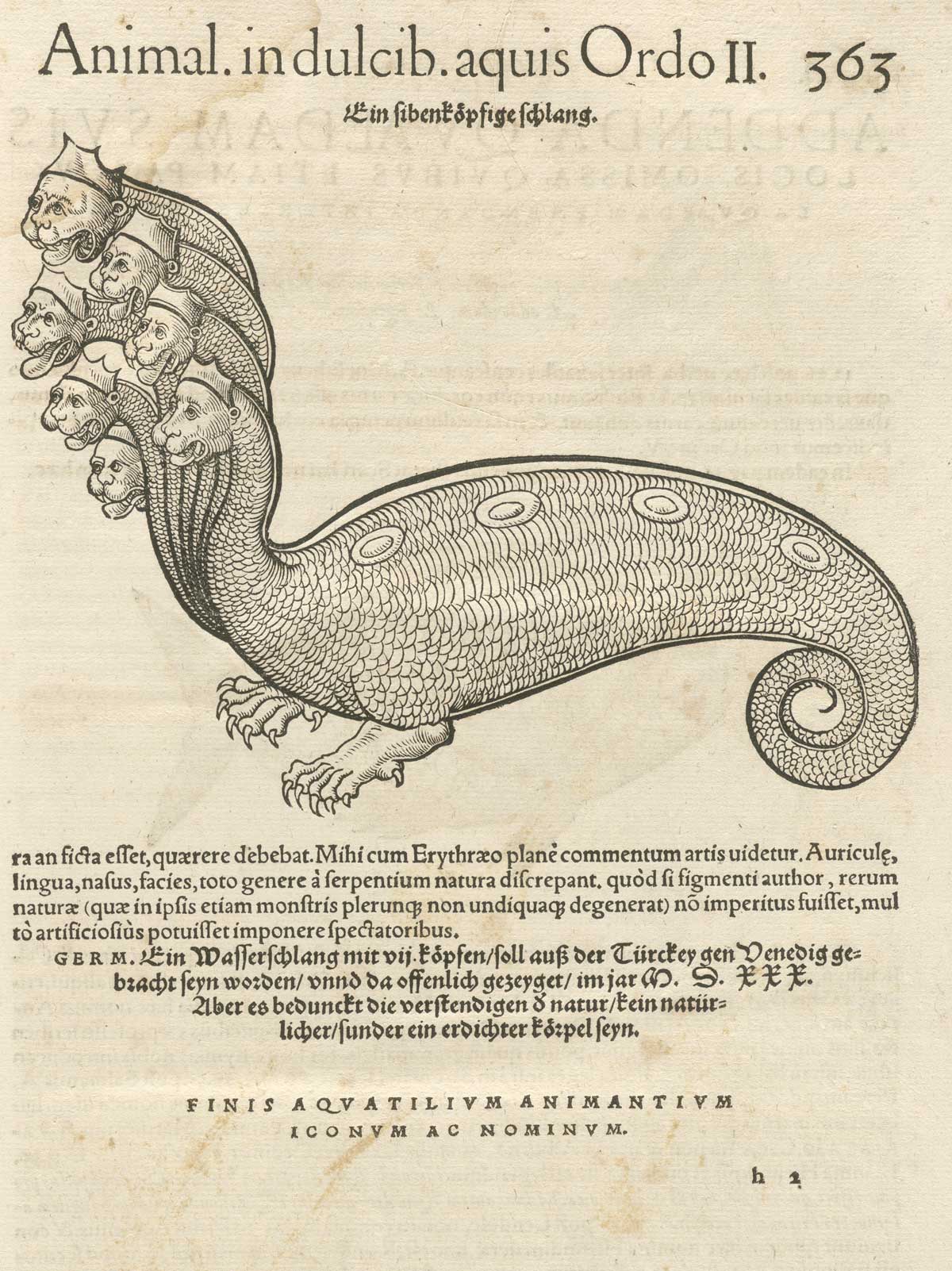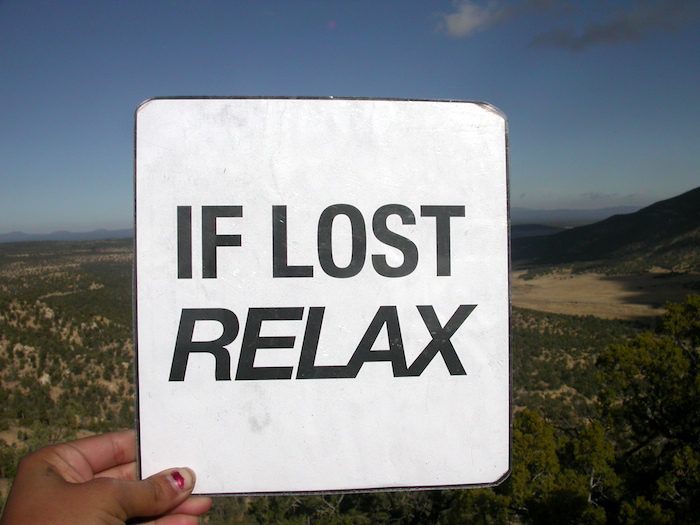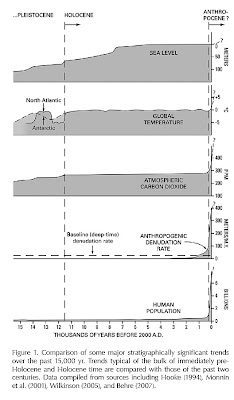Research Journal
-
April 12, 2009
Squirrel Facts (Ratatoskr)
- Yggdrasil the world tree. Wägner, Wilhelm. 1882. Nordisch-germanische Götter und Helden
In Norse mythology, Ratatoskr (Old Norse, generally considered “drill-tooth” or “bore-tooth”) is a squirrel who runs up and down the world tree Yggdrasil to carry messages between the unnamed eagle, perched atop Yggdrasil, and the wyrm Níðhöggr, who dwells beneath one of the three roots of the tree. Ratatoskr is attested in the Poetic Edda, compiled in the 13th century from earlier traditional sources, and the Prose Edda, written in the 13th century by Snorri Sturluson. Scholars have proposed theories about the implications of the squirrel.The name Ratatoskr contains two elements rata- and -toskr. The element toskr is generally held to mean “tusk”. Guðbrandur Vigfússon theorized that the rati- element means “the traveller”. Vigfússon says that the name of the legendary drill Rati may feature the same term. According to Vigfússon, Ratatoskr means “tusk the traveller” or “the climber tusk.”
I am looking for more information on this character.
Image of Rataoskr from the Edda Oblongata, Icelandic manuscript, 1680 Here’s a nice map of the Tree’s cosmology:

Map of tree from the blog, Le paganisme germanique et scandinave -
April 11, 2009
PROTECTED ZONE by Chus Garcia-Fraile
Tags: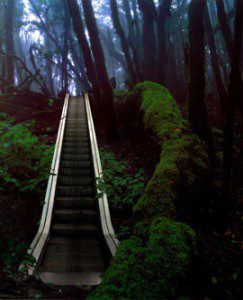
Still from Protected Zone …click here to see video of Protected Zone.
I’ve been intermittently reading Deep North, the document produced by Transmediale 2009, an annual festival held in Berlin that weaves media, social change and a thematic issue. This year was loosely Climate Change/Social Change (my piece The Poster Children was in the exhibition).
The book contains an essay by Hilary Koob-Sassen called “Faith in Infrastructure, An Errorist Manifesto.” In this he states that
“Elaboration moves along when structures subside from direct experience to a position of foundational relevance. The aqueducts have disappeared- we have faith in subterranean pipes. Upon this faith we buy a house. Upon this faith we live in New Orleans. An evil experience is the same for the living and the built: the floods were outside of that range of reality to which the structure could respond. The levee breaks and no hidden capacity reveals itself: no preternatural burst of adrenaline allows the slipping deer to spring to a foothold, no particularly well-fashioned piece of levee exceeds its nominal strength and endures. No response. These two syntaxes- genetic and materialist- must name reality faster than it changes. Otherwise, reality deletes them.” -
April 11, 2009
Doga
Tags:Our in-betweens keep getting closer.
“Doga combines massage and meditation with gentle stretching for dogs and their human partners. In chaturanga, dogs sit with their front paws in the air while their human partners provide support. In an “upward-paw pose,” or sun salutation, owners lift dogs onto their hind legs. In a resting pose, the person reclines, with legs slightly bent over the dog’s torso, bolster-style, to relieve pressure on the spine.Doga instructors are not required to complete certification, though teacher training seminars do exist, like ones taught by Brenda Bryan, 43, a yoga and doga instructor in Seattle who has just written a book on the subject. In general, instructors learn informally by sharing techniques. Guiding these techniques is an agreed-upon, though not officially stated, philosophy: Because dogs are pack animals, they are a natural match for yoga’s emphasis on union and connection with other beings.”
-
April 11, 2009
Berserker
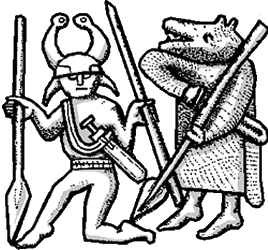
The Vikings are said to have ritually ingested Amanita muscaria, in order to enter the ‘berserker’ state, ready for battle (the Icelandic name for fly-agaric supposedly contains the word, ‘berserk.’) Verification on the Icelandic word for “fly-agaric” would be appreciated.

Amanita muscaria
-
April 11, 2009
Land Arts of the American West
Tags:I went to a talk at Parsons today on Land Art, presented by Incubo (Chile) and Land Arts of the American West (Texas).
The 2 groups worked on this, Earthworks Lab.Land Arts of the American West is “an interdisciplinary field program expanding the definition of land art through direct experience with the full range of human interventions in the landscape, from the inscriptions of pictographs and petrogylphs to the construction of roads, dwellings, and monuments, as well as traces of those actions. Land art includes gestures both small and grand, directing our attention from potsherd, cigarette butt, and mark in the sand to human settlements, monumental artworks, and military/industrial projects such as hydroelectric dams and decommissioned airfields.”
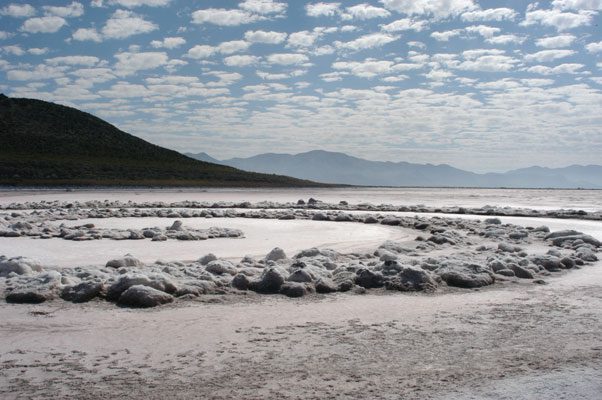
Robert Smithson, Spiral Jetty One of Incubo’s projects is Nomade, taking a 4wd bus out into remote landscapes. First foray for artists and designers went to the Atacama Desert, engaging in fog-catching, speculative interventions, and inquiring into recent post-industrial landscapes.
(Tapping fog or fog harvesting has successful in many localized instances.)

Fog water collectors on El Tofo mountain, Chile. Water from the fog condenses on these large nets. -
April 11, 2009
The Anthropocene Era (1)
New geological ages are characterized by changes in global environmental conditions and large scale shifts in types of species. Recently Earth has entered into a new geological age: The Anthropocene, from anthropo / man and cene / new [geological age]. Humans are now changing the world on a global scale and ushering in the new era in geologic time.
– Oceanography in the 21st CenturyIt has no precise start date, but may be considered to start in the late 18th century when the activities of humans first began to have a significant global impact on the Earth’s climate and ecosystems. This date coincides with James Watt‘s invention of the steam engine in 1784. The term was coined in 2000 by the Nobel Prize winning atmospheric chemist Paul Crutzen, (who unpacked the process of atmospheric ozone depletion) who regards the influence of human behavior on the Earth in recent centuries as so significant as to constitute a new geological era.
– WikipediaGeologists from the University of Leicester propose that humankind has so altered the Earth that it has brought about an end to one epoch of Earth’s history and marked the start of a new epoch – the Anthropocene.
They have identified human impact through phenomena such as:
• Transformed patterns of sediment erosion and deposition worldwide
• Major disturbances to the carbon cycle and global temperature
• Wholesale changes to the world’s plants and animals
• Ocean acidificationThe scientists analysed a proposal made by Nobel Prize-winning chemist Paul Crutzen in 2002. He suggested the Earth had left the Holocene and started the Anthropocene era because of the global environmental effects of increased human population and economic development.
The researchers argue that the dominance of humans has so physically changed Earth that there is increasingly less justification for linking pre- and post-industrialized Earth within the same epoch – the Holocene.
– from Paleoblog -
April 11, 2009
15th century woodcuts of plants and other monsters
This, from a great collection in the Science and Society Picture Library:
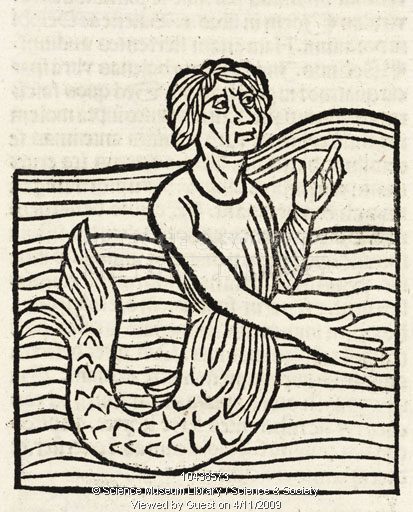
Woodcut from ‘Hortus Sanitatis’, (‘Garden of Health’), printed by Johann Pruss in Strasbourg in 1497 and this, too:
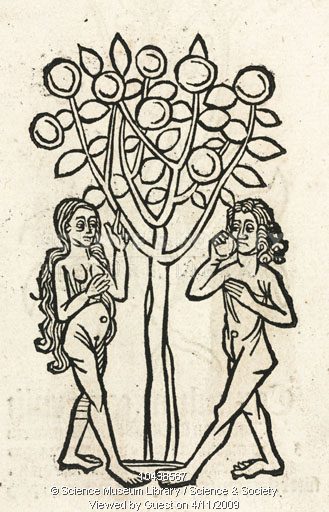
Hortus Sanitatis was the most popular and influential herbal of its time, and served as an encyclopaedia of all knowledge and folklore on plants, animals, and minerals. It combines elements of natural history with subjects traditionally found in herbals, and includes many mythical creatures. Many of the woodblock engravings were taken from the German ‘Herbarius’ (1485), itself derived from earlier herbals, repeating many of their errors. -
April 10, 2009
Interspecies Coercion
Tags: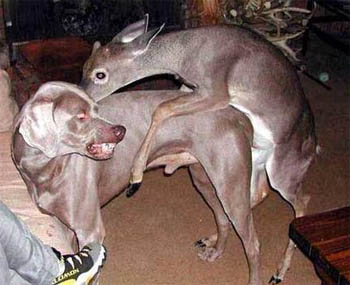
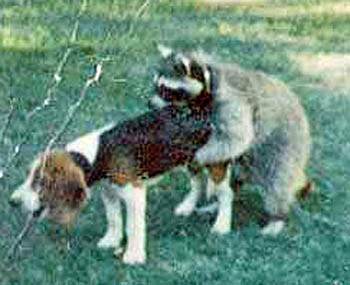
.. for some reason, an Oracle consulting firm is housing all these images. Thanks.
-
April 10, 2009
Lindisfarne
Farne Island is home to the Lindisfarne Priory ruins, whose monks in the 7th century created the Gospels, an unusual and exquisite Celtic Christian illuminated manuscript. Birds are rife in the manuscript as well as a cat on the front page, quite unusual in the iconography, according to Aly Wolff-Mills, a student at ITP who did a project expanding the cat into a full-fledged heretic deity.
Here’s some contextualizing drama:

Lindisfarne Castle -
April 10, 2009
Conrad Gesner’s Historiae Animalium
Tags:Also at the National Science Library, this book of Conrad Gesner’s beautiful 16th century animal woodcuts, real and imagined (so much was hearsay anyway).
